标签:
声明:转载请保留声明头部并标明转载、并私信告知作者。原文:http://www.cnblogs.com/papertree/p/5285705.html
上面讲到node调用Script::Compile()和Script::Run()解析执行app.js,并把io操作和callback保存到default_loop_struct,那么app.js里面js代码如何调用C++的函数呢?
在4.2节进行解释,先在4.1节来点知识预热。
来看看google V8开发者文档的一点介绍:(地址:https://developers.google.com/v8/get_started)
大概意思就是context(上下文)是用来执行javascript代码的运行环境,而且运行javascript代码的时候必须指定一个context。
从文档里面摘了一段hello world代码:
int main(int argc, char* argv[]) { // Initialize V8. V8::InitializeICU(); V8::InitializeExternalStartupData(argv[0]); Platform* platform = platform::CreateDefaultPlatform(); V8::InitializePlatform(platform); V8::Initialize(); // Create a new Isolate and make it the current one. ArrayBufferAllocator allocator; Isolate::CreateParams create_params; create_params.array_buffer_allocator = &allocator; Isolate* isolate = Isolate::New(create_params); { Isolate::Scope isolate_scope(isolate); // Create a stack-allocated handle scope. HandleScope handle_scope(isolate); // Create a new context. Local<Context> context = Context::New(isolate); // Enter the context for compiling and running the hello world script. Context::Scope context_scope(context); // Create a string containing the JavaScript source code. Local<String> source = String::NewFromUtf8(isolate, "‘Hello‘ + ‘, World!‘", NewStringType::kNormal).ToLocalChecked(); // Compile the source code. Local<Script> script = Script::Compile(context, source).ToLocalChecked(); // Run the script to get the result. Local<Value> result = script->Run(context).ToLocalChecked(); // Convert the result to an UTF8 string and print it. String::Utf8Value utf8(result); printf("%s\n", *utf8); } // Dispose the isolate and tear down V8. isolate->Dispose(); V8::Dispose(); V8::ShutdownPlatform(); delete platform; return 0; }
你可能会发现,上面说了script->Run(context) 一定要指定一个context。那么看回3.1.2 中的图3-1-3,node.cc里面的script->Run()并没有context参数。
跳到v8的源码,deps/v8/src/api.cc,就会发现这实际上是两个重载函数,无参Script::Run()会先从Script对象取得当前的context,再调用Script::Run(Local<Context> context)。
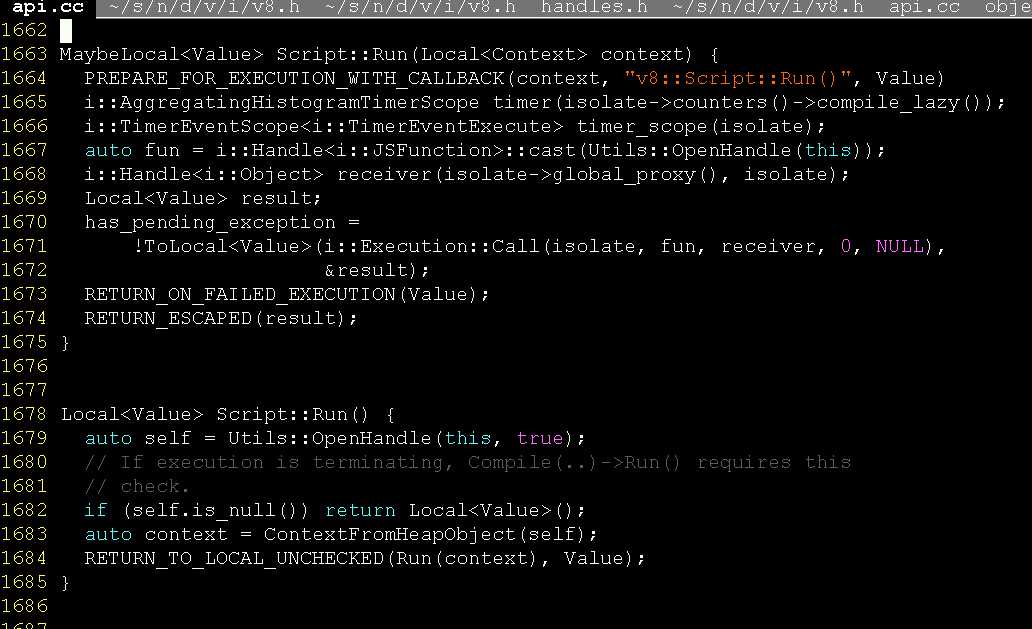
图4-1-1
看个例子:
左边为node 原生lib模块网络socket操作部分的文件 —— net.js,我们平时使用server.listen()时,最终调用到net.js里面,先通过new TCP()创建一个handle对象,再调用handle.listen()。而这个TCP和listen,均来自左边tcp_wrap.cc文件。
也就是说,通过net.js里面的handle.listen()调用了tcp_wrap.cc里面的TCPWrap::Listen()函数,并且传给handle.listen()的 js参数—— backlog,被包装到了C++的 FunctionCallbackInfo<Value>类对象args。
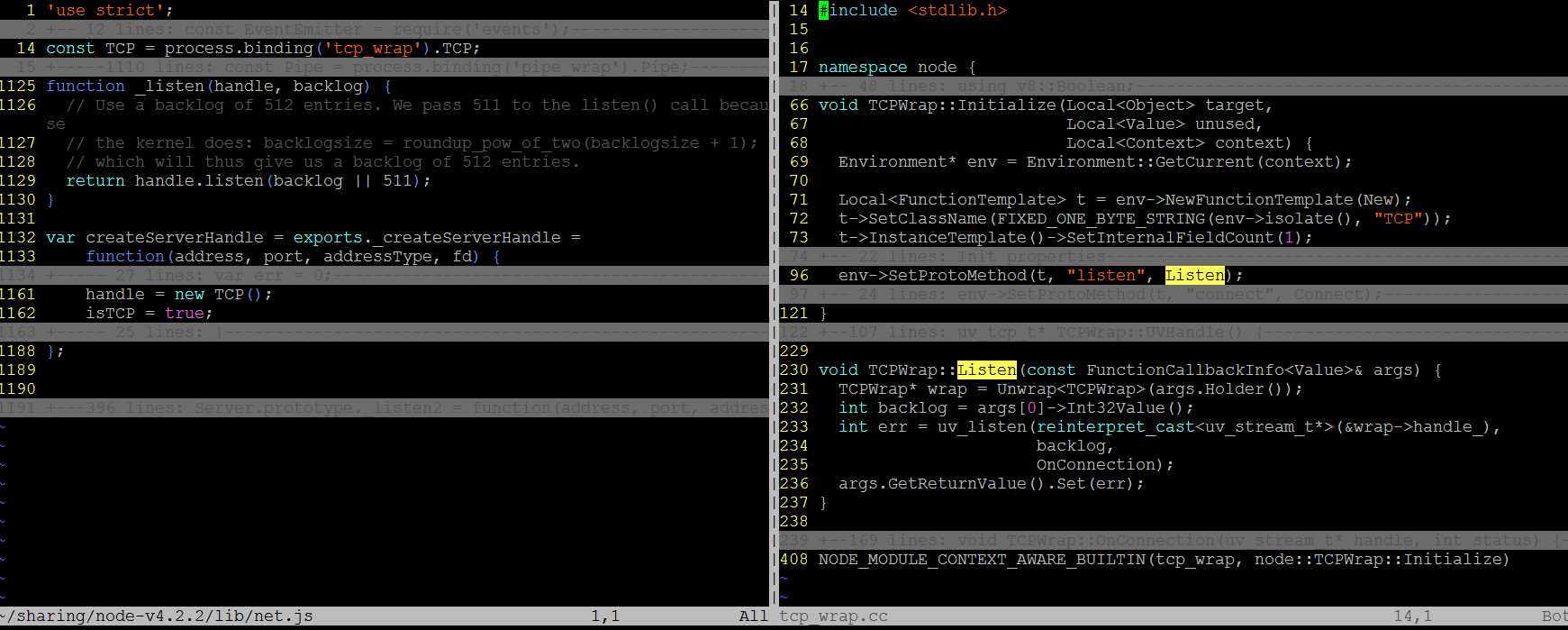
图4-2-1
如果你第一感觉是js代码调用C++代码无法理解,那么一定是受到“语法”的干扰。
确实,从静态的角度来看,js和C++是两种语言,语法不互通,直接在js代码调用C++函数那是不可能的。
那么,从动态的角度(运行时)来看呢?别忘了,任何编程语言最终运行起来都不过是进程空间里的二进制代码和数据。
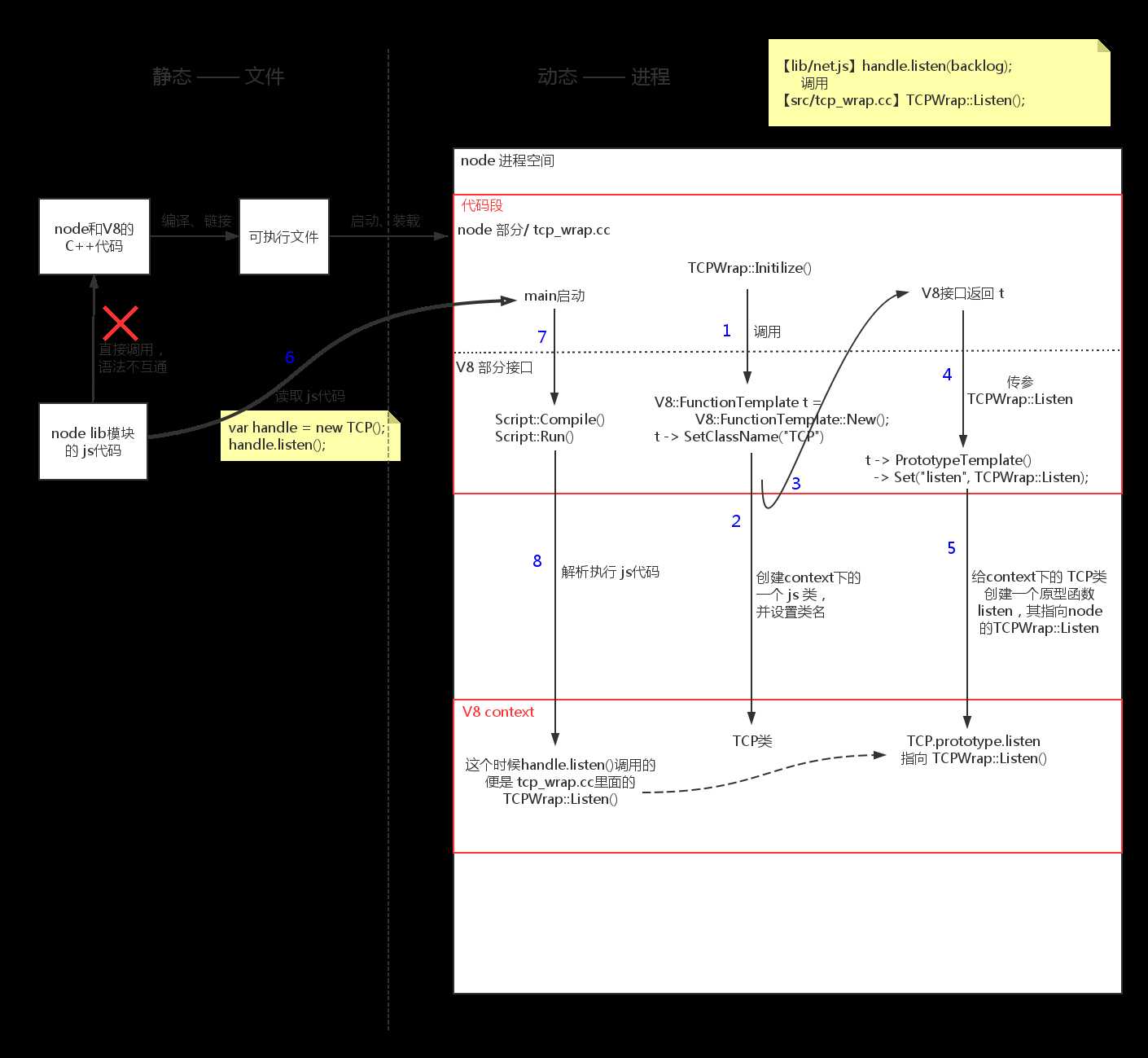
图 4-2-2
4.1 中已经讲了,Script::Compile()和Script::Run() 的时候必须为 js代码指定一个运行环境(context)。那么 js代码和context的关联是很自然的。
那么,上图蓝色标号1-5这几个步骤,即在C++代码层面,把C++函数设置到context的细节和相应的V8 接口是什么呢?
在node里面,在C++代码里面提供给运行时javascript代码使用的无非就是这几种:
1. 一个对象(比如process),对象上设置属性(比如process.versions)、或者方法(比如process._kill)
2. 函数对象(比如TCP),设置原型方法(比如TCP.prototype.listen)
在3.2中讲到,main函数启动后会加载执行src/node.js文件,并且把process对象传给node.js文件,在里面设置process.nextTick()等方法。
那么来看看 C++如何创建一个给js使用的对象。
回去3.1.2节看一下“图3-1-3”。在LoadEnvironment() 里面执行 f->Call()调用node.js里的匿名函数时,传过去的process对象是通过env->process_object()获取的。
env->process_object()的实现如下:

图 4-3-1
这里是个宏,展开就是
inline v8::Local<v8::Object> Environment::process_object() const { return StrongPersistentToLocal(process_object_); }
那么上面标红的process_object_ 成员,定义如下:
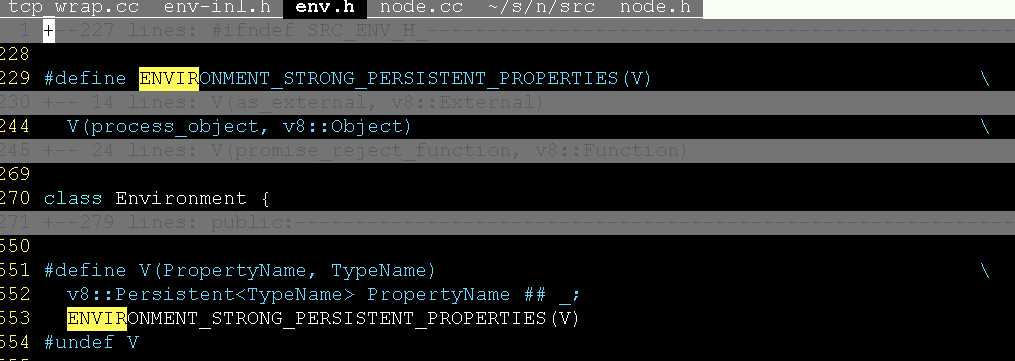
图 4-3-2
这里也是一个宏,展开就是
class Environment { v8::Persistent<v8::Object> process_object_; }
那么这里可以看到,C++里面提供给js代码的对象,就是一个v8::Object类型的对象。
那么,v8::Object类型的对象如何在C++里面设置属性呢?
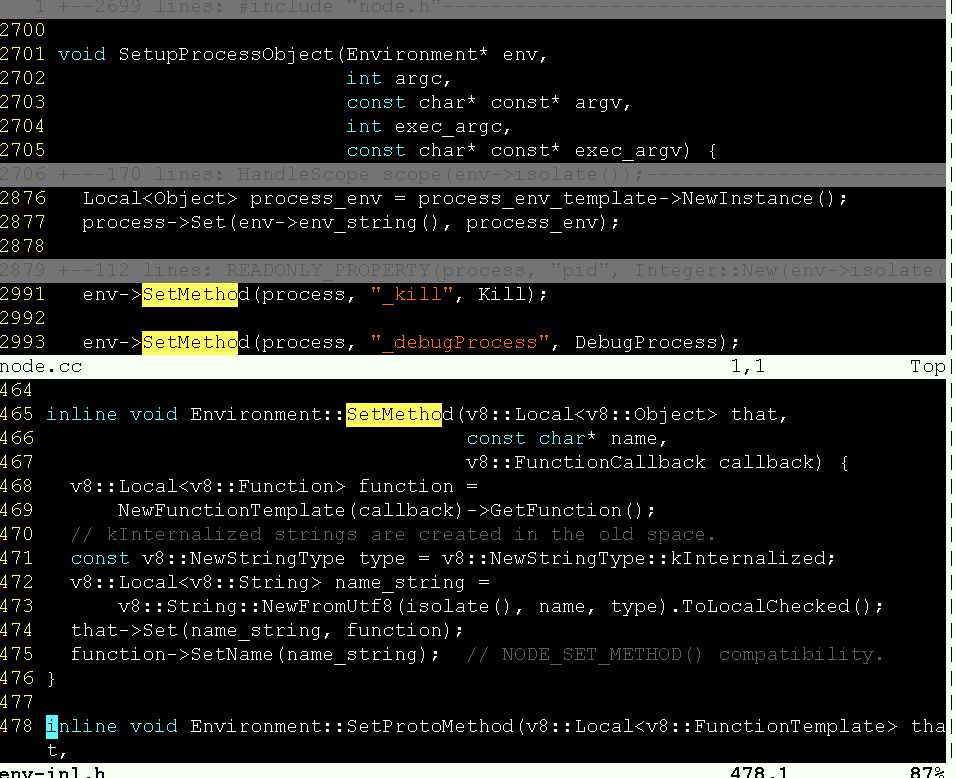
图4-3-3
这里可以看到,v8::Object类提供了Set()方法,来让你设置供js访问的属性或方法。
那么第二种类型,就是设置prototype方法。在js里面,没有真正的类的概念,而是通过给函数对象TCP的prototype属性设置方法,使用的时候通过new TCP()去创建实例。
那么,v8如何设置原型方法?
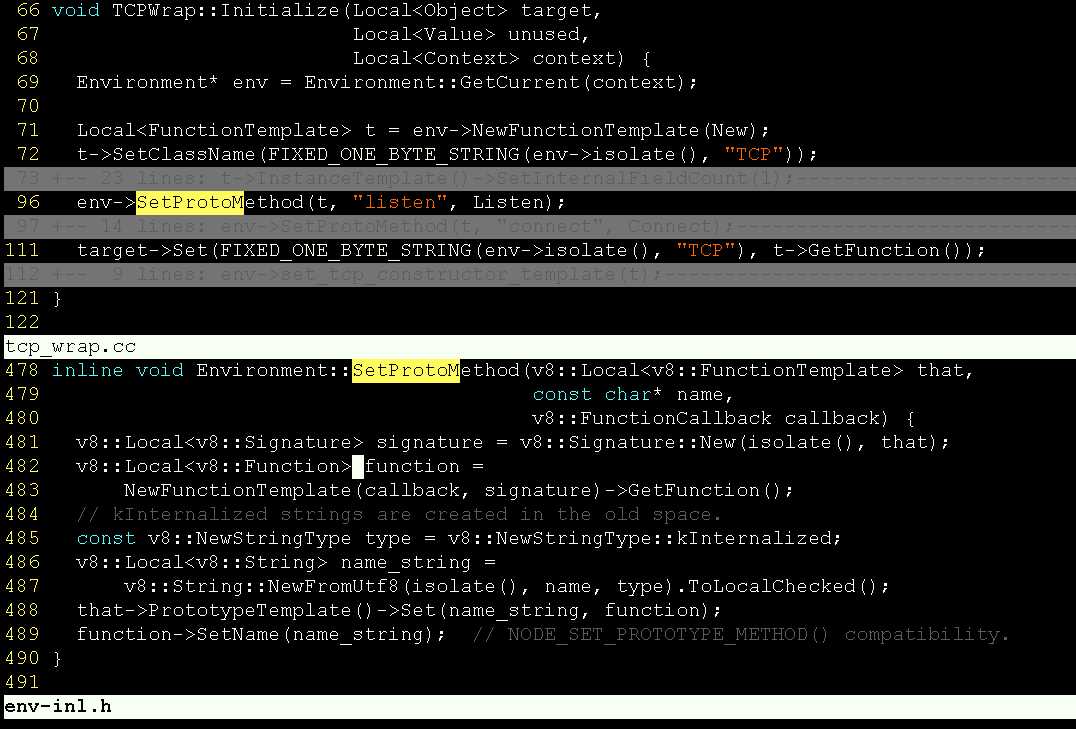
图4-3-4
这里可以看到,通过创建一个v8::FunctionTemplate类型的对象 t,通过 t->PrototypeTemplate() 去获取函数对象的prototype,并进一步调用Set()去设置prototype上的方法。
最后再通过 t->GetFunction() 去获取一个该函数模版的方法。
注:关于 js文件process.binding(‘tcp_wrap‘)引入TCP函数对象的机制,在下一篇博客讲。
标签:
原文地址:http://www.cnblogs.com/papertree/p/5285705.html